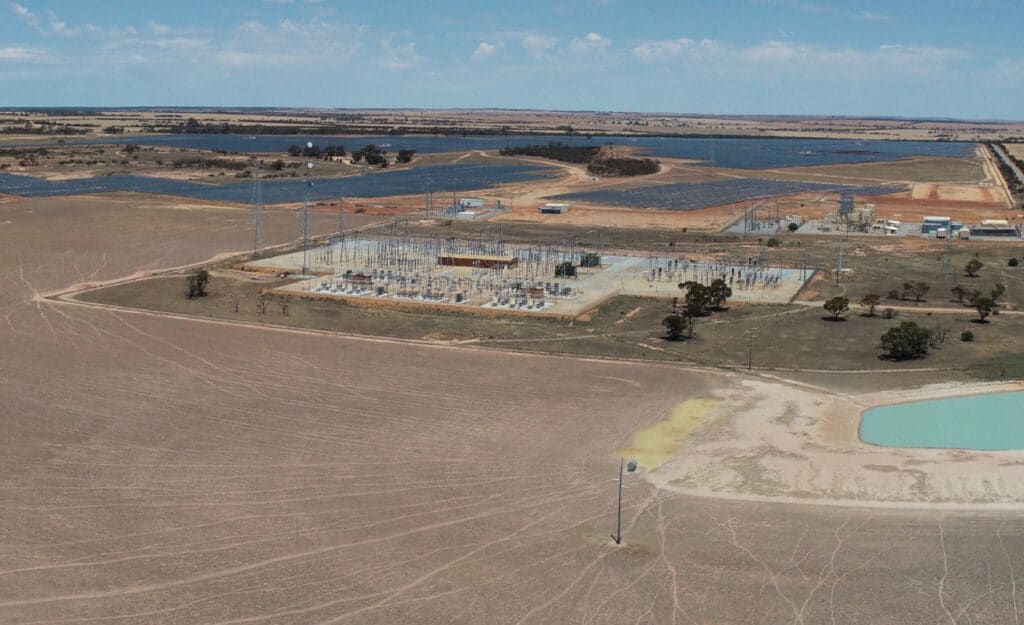A major battery project in Western Australia is moving ahead this week.
Construction is officially underway on the 100 MW / 400 MWh Merredin Battery Energy Storage System [BESS], a grid‑scale facility designed to bolster the stability of Western Australia’s South West Interconnected System [SWIS] and support the State’s renewable transition.
The joint venture between Atmos Renewables and Nomad Energy is being built by GenusPlus Group on a 4 ha footprint within a 61.5 ha agricultural property, about 7.5 km south‑west of Merredin.
The site’s proximity to Western Power’s Merredin Terminal substation enables a short, sub‑100 m connection to the 220 kV Goldfields transmission line, minimising new transmission works.
The BESS will comprise 110–120 battery containers, 28–30 ring main units with transformers and switchgear, a high‑voltage/medium‑voltage switchyard, substation, control rooms, operations and maintenance buildings, firefighting systems and associated civil works.
All equipment will be installed on concrete pads, with internal access roads built to Shire and bushfire standards.
GenusPlus’ $65 million engineering, procurement and construction contract includes civil and structural works, main transformer installation, switchgear, SCADA integration, earthing systems, firewater reticulation, drainage, and ancillary buildings. Detailed design and procurement will be followed by an 18‑month build, with commissioning scheduled for October 2026 and completion in early 2027.
Peak construction will employ about 70 workers on site, with total workforce numbers reaching 150 across the build period.
Once operational, the facility will run largely autonomously, requiring only three to five permanent staff, supported by local contractors. The proponents have committed to using Western Australian labour and materials where possible, and to engaging First Nations employees, contractors and businesses.
The BESS is positioned alongside existing large‑scale renewable assets, including the 132 MW Merredin Solar Farm and 222 MW Collgar Wind Farm, forming part of a wider energy precinct in the Wheatbelt.
Its four‑hour discharge capability is expected to improve load‑shifting and frequency control on the SWIS, complementing other recent battery projects in Kwinana, Collie and by Neoen.
“Grid‑scale batteries play an important role in our clean energy transition,” said Energy and Decarbonisation Minister Amber‑Jade Sanderson, “storing excess energy during the day and discharging it at night – helping to stabilise and strengthen our electricity grid.”
A voluntary Merredin Battery Community Legacy Fund will provide $20,000 annually over the project’s 25‑year life to support local initiatives in health, education, sport, culture and economic development. The developers have also pledged to collaborate with local suppliers and encourage community participation in procurement opportunities.
According to the project’s planning documentation, the cleared agricultural site has no remnant vegetation, minimal visual impact, and is more than 2 km from the nearest residence. Environmental and bushfire risk assessments have been completed, with firefighting infrastructure incorporated into the design.


